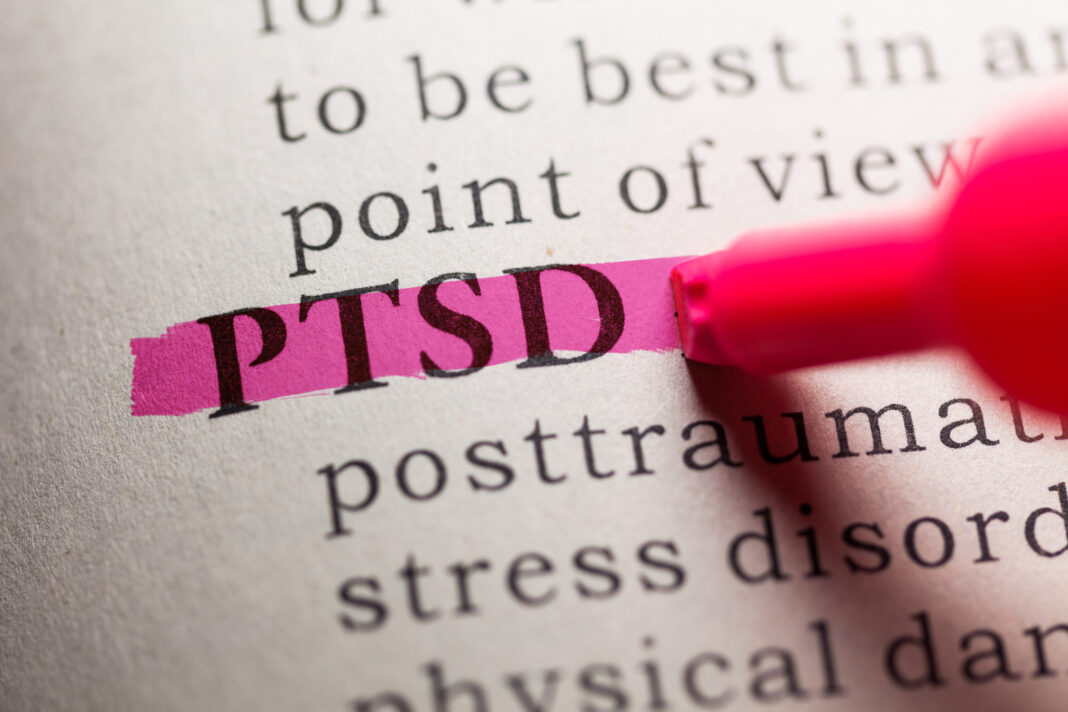Mark lost his innocence during four and a half months in a Turkish jail. He felt helpless and horrified, as no one was aware of his condition. He witnessed brutality beyond human perception, so extreme that, by the time he was released, he felt like nothing more than a puppet. Initially, he was unaware that he was suffering from Post Traumatic Stress Disorder (PTSD). Upon returning to Australia, he experienced anxiety, nightmares, and constant fear.
He lost his job, home, and family, yet he remained unaware of the true nature of his mental struggle. In a society that considered him a coward, he endured the “Prozac era,” during which doctors heavily medicated him with sedatives. It was an equally horrifying experience as his time in the Turkish jail. He is now gradually improving, and Picking Up the Pieces has become an important part of his life. This is an Australian non-profit organization dedicated to raising awareness, reducing stigma, and promoting early recognition and support for PTSD.
“You cannot heal what you cannot feel”. ~John Bradshaw
The world is progressing at a rapid pace, and we witness the charisma of science and technology all around us. While many aspects of life have become easier with the aid of science, managing human emotions remains a significant challenge. It is widely accepted that, alongside advancements in living standards, experiences of depressive phases have also increased. The growing emotional distance between individuals, the pressure to meet societal expectations, and various personal stressors have made PTSD a common condition experienced by many.
PTSD is a deeply personal and often invisible struggle. It typically develops after exposure to traumatic events and is marked by a range of symptoms that can severely affect daily functioning and overall quality of life. These symptoms include flashbacks, nightmares, severe anxiety, emotional numbness, irritability, avoidance behaviours, and persistent, distressing thoughts related to the trauma.
Such experiences can leave lasting psychological and physical scars, ultimately disrupting behavioural patterns. Understanding PTSD is essential for recognizing its impact and ensuring that appropriate support and treatment are provided to those affected.
Young children often exhibit symptoms such as fear, sleep disturbances, and regression. Elementary-age children may mis-sequence memories and hold the false belief that the traumatic event could have been predicted. In adolescents, symptoms closely resemble those of adult PTSD, with impulsivity, aggression, and traumatic reenactment being particularly prominent.

According to George Bonanno, Professor of Clinical Psychology, resilience after trauma is common, not a rare phenomenon. He emphasizes adjusting responses according to the situation and highlights the importance of flexible coping strategies. Bonanno also challenges the assumption that everyone needs therapy, asserting that many individuals recover naturally.
Dr. Bessel van der Kolk, a Dutch psychiatrist, emphasizes the importance of working with both the body and mind to overcome trauma. He advocates not relying solely on talk therapy but incorporating somatic and experiential therapies for a more holistic approach to treatment.
PTSD does not eliminate the possibility of a successful life, especially when strong willpower and the right support systems are in place. Many public figures and everyday heroes have shown that, with effective treatment and coping techniques, life can be rebuilt. Managing symptoms through therapy, self-care, and mindfulness can empower individuals in their careers, build thriving relationships, and enhance their creativity.
We often rely on certain parameters of happiness that are commonly associated with success. However, traditional metrics such as money, fame, or promotions may not align with the true sense of success defined by your inner voice. Begin by asking yourself reflective questions such as: What truly makes me feel content? What brings me lasting happiness? What strengths do I possess that can help me achieve my version of success?
Celebrities with PTSD Journey
Celebrities who rule over the hearts of many often have darker aspects to their lives. Some have shared their journeys through PTSD, and these stories serve as a powerful source of motivation to rise above difficult times.
Lady Gaga, at the age of 19, experienced sexual harassment, which led to multiple hospitalizations to treat the mental and physical anxiety caused by PTSD. Dr Paul Conti treated her through talk therapy and medication. She eventually co-authored a book entitled Trauma: The Invisible Epidemic with Dr Conti, highlighting the multifaceted nature of trauma.
Jason Kander, a former Missouri Senate candidate, exhibited political strength, but deep down, he struggled with horrifying memories from his deployment in Afghanistan. He stepped away from his position to seek Prolonged Exposure (PE) therapy and Cognitive Processing Therapy (CPT) for PTSD treatment. His healing journey was featured in the 2023 award-winning documentary HERE. IS. BETTER.
Dorit Kemsley experienced a haunting turn in her life when she was robbed at gunpoint by multiple intruders in her Encino Hills home. This traumatic incident shook her sense of security and triggered PTSD symptoms. She found relief through Eye Movement Desensitization and Reprocessing (EMDR), a therapy aimed at diverting the mind from disturbing memories. She even filmed an EMDR session to showcase the therapy’s transformative power.

Jaime Lowe experienced a similar trauma to Lady Gaga’s, but at the age of 13, and its effects lingered for decades. She turned to Cognitive Processing Therapy (CPT), which helped neutralize her traumatic memories. Moreover, she recorded ten of her therapy sessions for the famous NPR show This American Life, transforming from a person full of voids into an empowered individual.
Ariana Grande, a renowned pop star, suffered from intense fear after the suicide bombing at her concert in Manchester, UK, which took 22 lives. Brain scans revealed the deep impact of PTSD on her mind. Recognizing the need for help, she sought therapy, later claiming that treatment saved her life. This experience inspired her to think beyond herself and launch a $2 million initiative to provide therapy for her fans.
Darrell Hammond, known for his comedy on Saturday Night Live, was diagnosed with complex PTSD stemming from childhood abuse. He underwent Cognitive Behavioral Therapy (CBT) to transform maladaptive thinking patterns, which he later discussed in the documentary Cracked Up.
Similarly, Prince Harry developed PTSD following the death of his mother, Princess Diana, which he addressed through EMDR therapy. Gabrielle Union, who survived a brutal sexual assault, found healing through talk therapy.
Four Risk Pathways for PTSD
There are four risk pathways for PTSD: pre-trauma risk factors, trauma characteristics, peri-trauma processes, and post-trauma processes.
Pre-trauma risk factors include demographics, prior trauma, psychological history, and personality traits, for instance, being female, having lower educational attainment, a history of childhood adversity, and high levels of neuroticism.
In PTSD, trauma characteristics, such as the type, severity, and context of the trauma, are of prime importance. Examples include interpersonal trauma, a high perceived threat to life, experiences of betrayal, and unpredictability.
Peri-trauma processes encompass psychological and biological responses that occur during or immediately after the traumatic event. These include dissociation, peritraumatic panic, physiological arousal, and the way the trauma is cognitively processed.
Post-traumatic processes refer to factors that sustain or worsen PTSD symptoms after the trauma has occurred. Examples include a lack of social support, negative coping strategies, feelings of guilt or shame, and ongoing stressors.
PTSD- Professional Support
No mental health condition can be conquered in isolation. While willpower plays a vital role, therapy significantly accelerates progress toward well-defined goals. Trauma-focused therapies are superior to non-trauma-focused treatments for PTSD.
Trauma-Informed Therapy: Evidence-based approaches such as Cognitive Behavioral Therapy (CBT) help reframe negative thoughts; Eye Movement Desensitization and Reprocessing (EMDR) is a promising technique for trauma recovery; Somatic Experiencing (SE) assists in relieving stress stored in the body; Exposure Therapy supports individuals in confronting fears and reducing avoidance behaviours; and Imagery Rescripting enables individuals to rescript their past experiences to change their response towards them.
Group Therapy: This form of psychotherapy offers individuals a safe space to share their experiences with others who face similar challenges. Guided by a therapist, group sessions complement individual therapy, fostering a shared understanding and healing.
Medication: In some cases, professional intervention is necessary to prescribe medications such as antidepressants (SSRIs), anti-anxiety drugs, or sleep aids. Some medications, like prazosin, may aid in nightmares. Regular medical check-ups are essential to ensure proper dosage and monitor side effects. Combining medication with psychotherapy may benefit complex cases.
Healthy Relationships and Boundaries
Finding understanding, easygoing people is a true blessing when dealing with PTSD, as it helps limit toxic interactions. If you’re surrounded by toxic individuals, it’s best to set firm boundaries or, when possible, walk away. Sometimes, having just one person in your life, someone who respects your pace, understands your trauma journey, encourages your growth, and provides emotional safety, can bring significant positivity to your life.
Empowering Self-Worth
PTSD often leads to heightened people-pleasing tendencies due to the trauma experienced by individuals with the condition. In such cases, personal empowerment becomes essential. This can be achieved by learning to say “no” to unwanted commitments and “yes” to opportunities that promote healing and growth. Setting these boundaries is vital for fostering inner growth and peace.
Small Wins mean Big Progress
Survivors of PTSD can thrive in their lives, even with occasional focus challenges, by setting small, achievable goals. This step-by-step approach helps build confidence. Engaging in meaningful activities, such as writing, journaling, playing music, or volunteering, can add purpose to their lives. Practicing self-compassion by acknowledging and celebrating their progress is also crucial for healing and growth.
Brain fog and energy fluctuations are common challenges faced by individuals with PTSD. In such cases, adhering to a rigid 9-to-5 work schedule may not be effective. Tasks should be time-framed based on available mental energy, breaking them down into smaller, manageable steps. This approach is a wise way to address the concerns linked with PTSD. It’s essential to remember that this strategy may not be effective every day. You are not giving up; you are simply regaining your lost energy.
Spiritual Growth
Spiritual awakening can offer comfort during times of stress and anxiety. Individuals experiencing painful situations often learn to accept pain as a natural part of personal growth. Spiritual development brings benefits such as improved relationships, a deeper sense of purpose, and greater meaning in life. It also strengthens resilience and contributes to overall well-being.
Pain to Purpose Journey
Many individuals who overcome PTSD go on to become artists and healers. Their painful journey often empowers them to serve as advocates and educators, as it fosters deeper insight and empathy. Trauma can awaken heightened intuitive abilities and mental resilience, providing the strength to rise as leaders.
Celebrate Small Successes
Individuals with PTSD should learn to find happiness in small, everyday successes. Simply battling the symptoms each day and preparing for the next is an achievement in itself. Completing daily tasks at home or work, without letting things slip, deserves to be celebrated, even if only within the heart.
References:
- https://www.pickingupthepeaces.org.au/ptsd-disorder/ptsd-symptoms/living-with-ptsd/
- https://www.nemahealth.com/blog-posts/8-celebrities-with-ptsd
- https://seattleanxiety.com/psychology-psychiatry-interview-series/2023/5/19/psychologist-george-bonanno-on-trauma-ptsd-amp-resileince?
- Vogt, D. S., D. W. King, and L. A. King. “Risk pathways for PTSD: Making sense of the literature. 293 In: Friedman MJ, Keane TM, Resick PA, eds.” Handbook of PTSD: Science and practice294: 99-115.
- Wampold, Bruce E., et al. “Determining what works in the treatment of PTSD.” Clinical psychology review8 (2010): 923-933.
- Hamblen, J., and B. Erisn. “PTSD in children and adolescents: National center for PTSD.” Journal of American Academy of Child and Adolescent Psychiatry49 (2012): 980-988.
- Van der Kolk, Bessel A. “Clinical implications of neuroscience research in PTSD.” Annals of the New York Academy of Sciences1 (2006): 277-293.
- Cukor, Judith, et al. “Emerging treatments for PTSD.” Clinical psychology review8 (2009): 715-726.
- Kearns, Megan C., et al. “Early interventions for PTSD: a review.” Depression and anxiety 10 (2012): 833-842.
- Foa, Edna B., Terence M. Keane, and Matthew J. Friedman. “Guidelines for treatment of PTSD.” Journal of Traumatic Stress (2000).
More from this author: Equipping Children with Survival Strategies in War Emergencies

Syeda Khair-ul-Bariyah has been associated with teaching since 2007. She is a synthetic organic chemist and a science and fiction writer. She has publications in both national and international journals in the field of Chemistry. Moreover, she is the author of a stage playbook, “Peregrination of the Soul,” and has a couple of articles and poems published on various websites.

